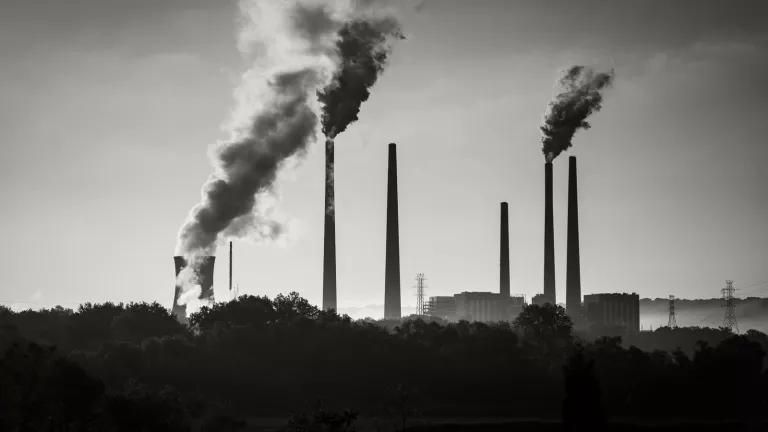If You Build It, Climate Change Will Come
We’ve already built enough coal-fired plants to create a climate change calamity.

A big challenge for climate change advocates is expressing the urgency of the problem. Our targets and data give the false impression that we have plenty of time to ramp down carbon pollution. The most commonly cited goal, for example, is to keep the global average temperature increase below two degrees Celsius. But even under the most pessimistic scenario, it will take many years to reach that threshold: We emit around 10 billion metric tons of carbon dioxide per year, and we can spew out somewhere between 870 billion and 1,240 billion tons and still stay under that two-degree limit. Simple arithmetic suggests we have decades before we max out our carbon budget.
But here’s the problem with thinking that way: When we build a new fossil fuel-fired power plant, we commit to emitting carbon for the lifetime of that plant. Even if we stop constructing such power plants today, the existing ones will release 729 billion metric tons before they age out. Unless we suddenly develop an appetite to mothball operable infrastructure—a decision we’ve thus far shown no ability to make—we’re already perilously close to overshooting the two-degree target.
It gets worse. If we build all the coal-fired plants currently on the drawing board, they will add 339 billion additional tons to the total. That brings us to 1,068 billion metric tons of CO2—enough to send us past our two-degree goal, even if no one so much as mentions building another coal-burning power plant.
These numbers are the starting point of an argument laid out in today’s issue of Science. Ottmar Edenhofer of Germany’s Potsdam Institute for Climate Research says reports of the coal industry’s demise have been extremely premature. In fact, he argues, coal is experiencing a renaissance in the developing world, and we must act immediately to stop it.
Edenhofer points out that coal has two advantages over renewable energy sources. First, our failure to charge coal companies for the problems their product inflicts on society—air pollution, health issues, climate change, etc.—works as a de facto subsidy. Without this subsidy, the industry might collapse. According to a 2013 Stanford study, adding these externalities into the cost of coal-fired electricity would hike prices more than 25 percent, which would make coal power more expensive than wind and solar in many regions.
The other advantage is somewhat more difficult to address. As the United Nations climate conference in Paris approaches, the United States, China, and other major economies are aiming to lessen their dependence on coal, with even greater reductions expected over the next couple of decades. In an open market, a drop-off in demand tends to lower the price of a commodity. Therefore, the international move away from coal has the paradoxical effect of making it cheaper for countries that haven’t decided to swear off fossil fuels. Solving this problem will require smart diplomacy, as well as significant renewable energy subsidies for the developing world, likely through the struggling U.N. Green Climate Fund.
Whatever combination of diplomacy, subsidies, and carbon quotas we rely upon to slow the rate of coal-fired plant construction, we ought to stop expressing our emissions in annual, current-year terms. Those numbers are basically meaningless. Building a new coal-fired power plant commits us to future carbon emissions, the same way buying something with a credit card commits you to future payments. We should be more honest about the energy decisions that our grandchildren will pay for.
This article was originally published on onEarth, which is no longer in publication. onEarth was founded in 1979 as the Amicus Journal, an independent magazine of thought and opinion on the environment. All opinions expressed are those of the authors and do not necessarily reflect the policies or positions of NRDC. This article is available for online republication by news media outlets or nonprofits under these conditions: The writer(s) must be credited with a byline; you must note prominently that the article was originally published by NRDC.org and link to the original; the article cannot be edited (beyond simple things such grammar); you can’t resell the article in any form or grant republishing rights to other outlets; you can’t republish our material wholesale or automatically—you need to select articles individually; you can’t republish the photos or graphics on our site without specific permission; you should drop us a note to let us know when you’ve used one of our articles.
Liquefied Natural Gas 101
The Uinta Basin Railway Would Be a Bigger Carbon Bomb Than Willow
How to Ditch the Biggest Fossil Fuel Offenders in Your Life